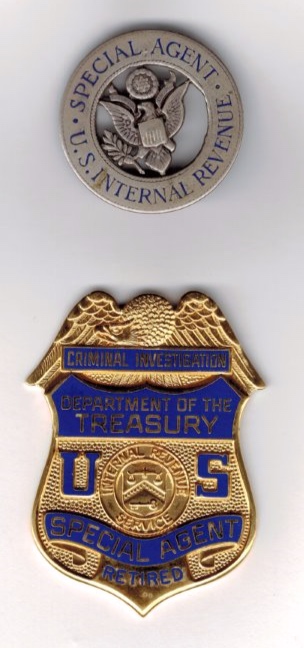(Courtesy of FJW Archives)
Frank John Wilson
Frank John Wilson (1887 - 1970) was born in Buffalo, the son of a policeman. Frank’s fundamentals arose from his father’s character- ‘To Protect and To Serve’. Being ‘woefully nearsighted’ kept him from becoming a policeman and joining the Army during WW I. Frank was always facile with numbers. He started out being a realtor. However, during the era of WW I, he gravitated to the Food Administration. He was intensely diligent, even obsessive in his work. He handled complex cases, involving illegal hoarding of rations and re-selling of such for large profits. Herbert Hoover, Chief of the Food Administration, quickly noted his talents as a forensic investigator. Hoover strongly encouraged him in this career path, as a special investigator. Shortly after the end of WW I, he joined the nascent Intelligence Unit as a Special Agent of the Treasury Department. Like most Special Agents in the early 1920s, time was spent vetting and then policing the Prohibition Agents on charges of counterfeiting documentation for withdrawal and sale of alcohol and bribery. Along with the other special agents, he routinely dealt in other criminalities amongst the rank and file bootleggers and tax-dodgers.
In 1928 (documented by Malone’s archival notes), under the direction of President Hoover, Wilson, along with Malone and Madden, were assigned by Irey to investigate Al Capone and his gang. Frank was the ‘outside agent’ and acted as the intermediary and conduit (from Malone) for information to move up the ladder to Irey and then unto the Chief’s superiors. It wasn’t uncommon for Wilson to fixate over the books 18+ hours a day during the nearly three-year investigation. Frank finally found the information needed in a ledger, through the undercover efforts of Malone. Aided by Eddie O'Hare, who was a Capone 'henchmen' willing to assist the federal investigation, the IU was able to convict Capone. The IU helped Eddie's son, Butch, get accepted at the U.S. Naval Academy. Butch died a hero in World War II. He was awarded the Congressional Medal of Honor. Chicago's airport is named after him.
Wilson was also a critical part of the Lindbergh baby kidnapping case that spanned March 1932 to 1936. He, along with Irey, Madden and Malone, plotted strategy with Lindbergh and Col. Breckenridge. Along with Irey, he underscored the need to record the serial numbers of bills used for the ransom. They also dictated the construction of the box and what string to use in securing the ransom. Wilson and Malone spent time target practicing with Lindbergh, ‘softening him up’ to abide by the IU’s plan.
The IU spent countless hours ‘tracking down leads’ during the two and a half months before the child’s body was discovered. Wilson continued his vigilance for the next few years trolling bank after bank throughout the US, alerting tellers to be on the look out for the recorded serial numbers. It was his diligence that essentially led to the kidnapper, Bruno Hauptmann; as well as his conviction and execution.
In 1936, after his tenure in the IU, he became the Chief of the Secret Service for 10 years under FDR and then Truman. He could easily be considered one of the top 10 persons in the US during WW II. During the war, he also devised transportation protocols to maneuver FDR back and forth across the Atlantic. Counterfeiting was one of the major strategies Hitler was using to undermine his enemies’ economies. Wilson devised the legendary ‘Know Your Money' anti-counterfeiting campaign. These standards for presidential protection and anti-counterfeiting are still the models used today.
There’s a building on the Secret Service’s James J. Rowley Training Center in Maryland named after him. Post tenure with the Secret Service, he became the Chief Security Consultant for the Atomic Energy Commission (“AEC”). After his stint with the A.E.C., he was ‘recruited’ by the Air Force to right some internal issues amongst its hierarchy. In retirement, he was highly sought after; but elected to enjoy his years with his wife, Judith. He was active in several federal retirement organizations. He passed in June 1970 at Georgetown Hospital.
